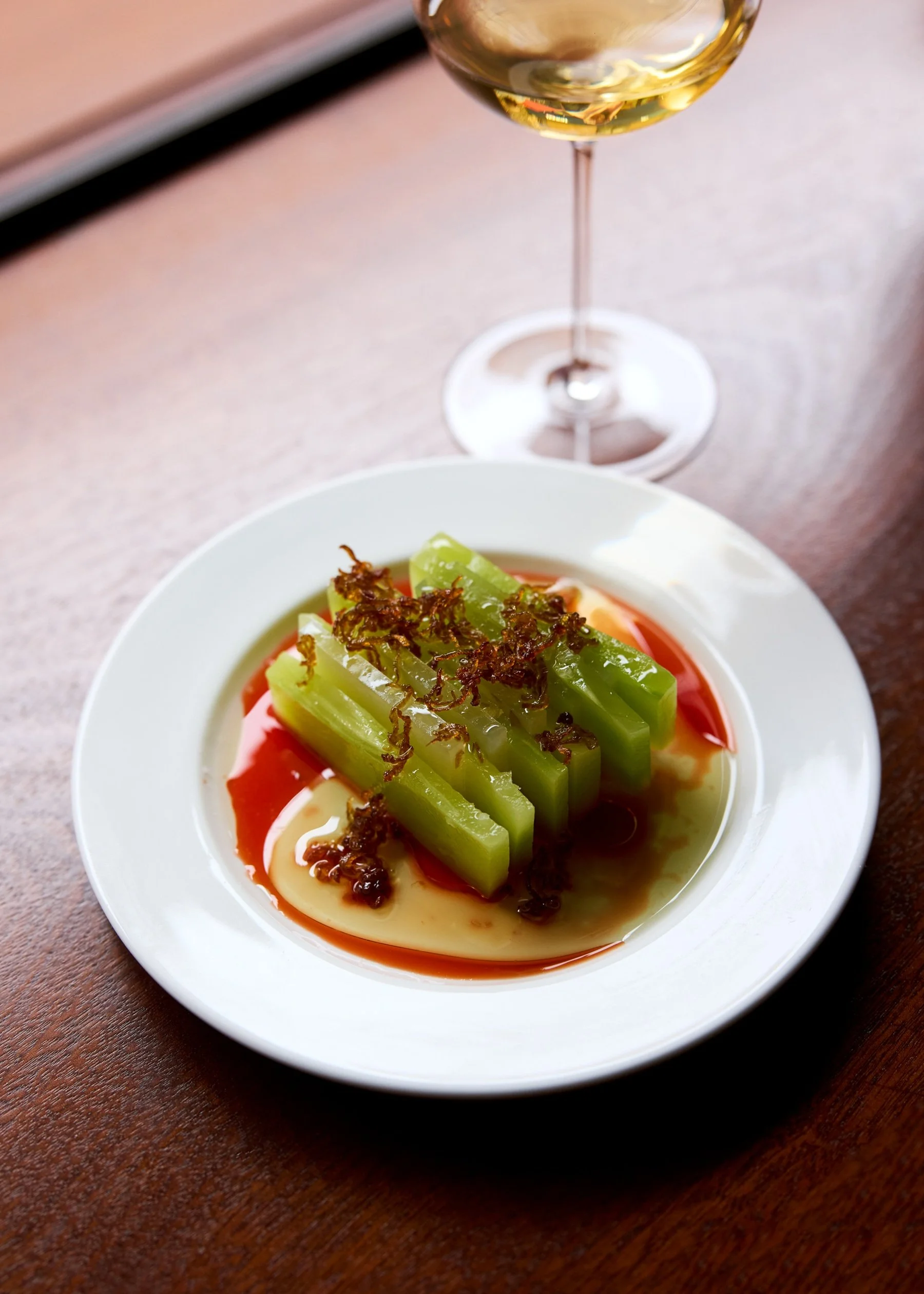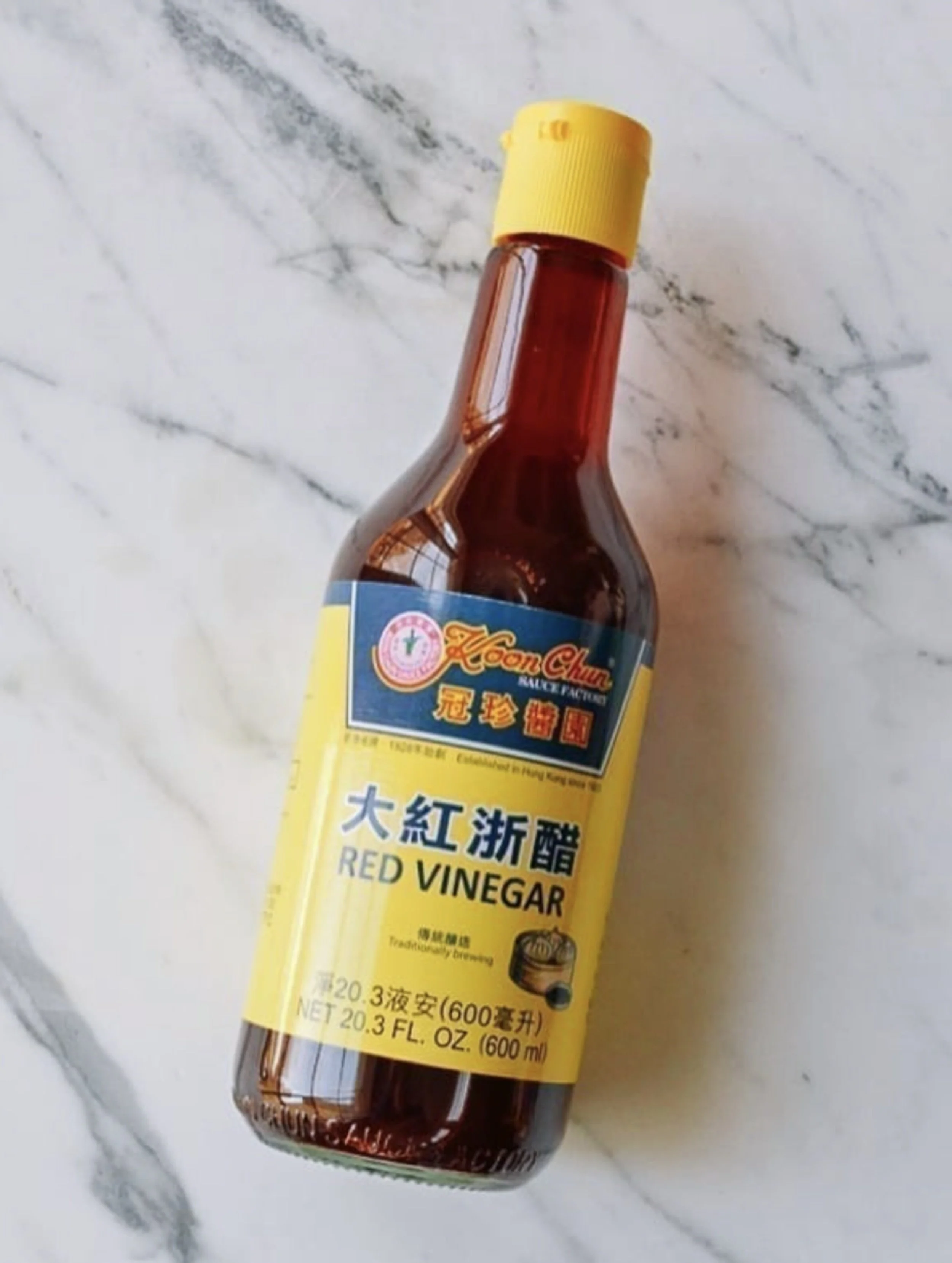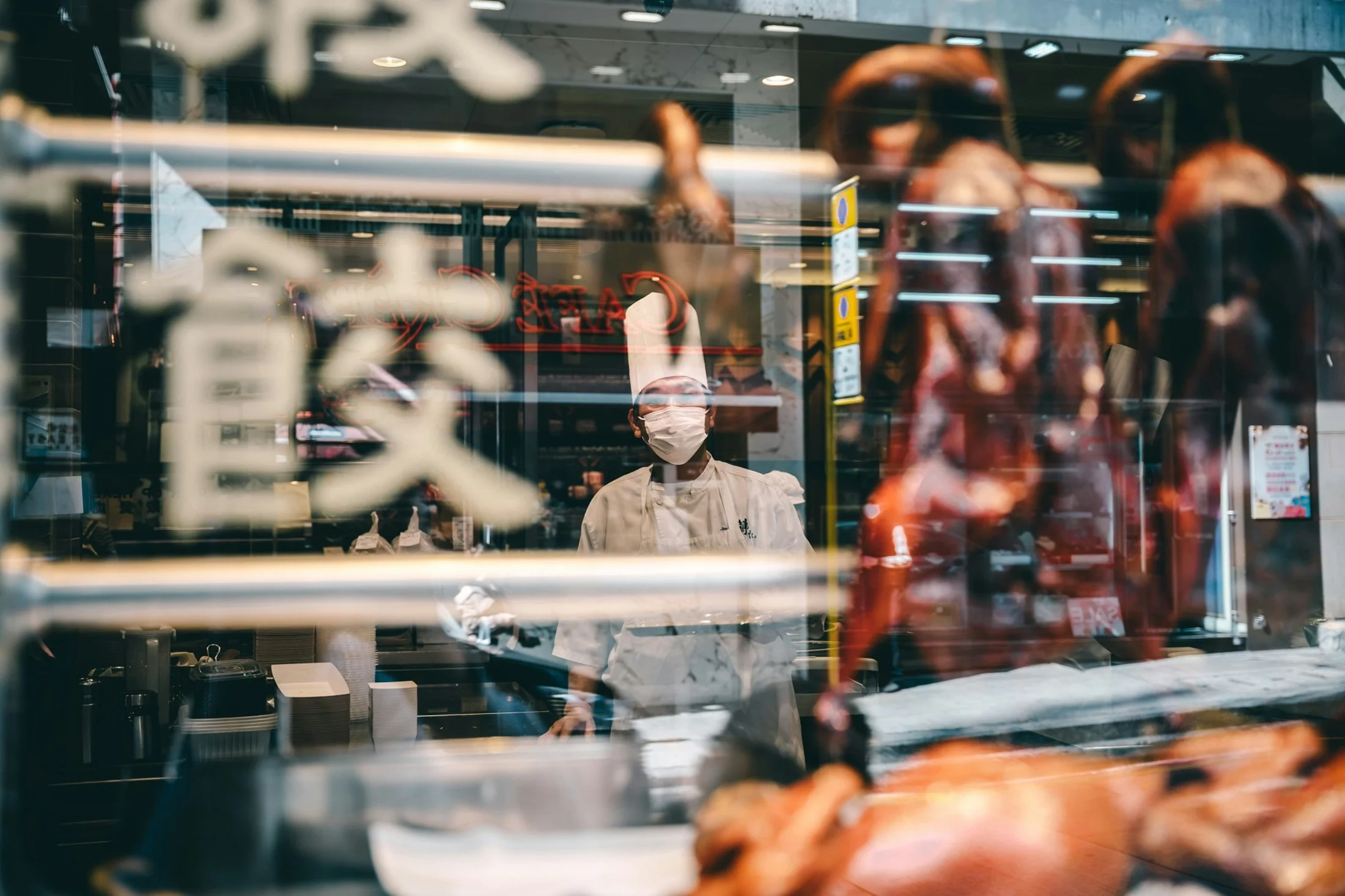Chinese Red Vinegar: Fuzhou Red Yeast Rice
photo by Matt Russell
This summer I stopped in Lei, a new wine bar in Chinatown for a quick drink and small bite before going to dinner at Peking Duck House around the corner. I sidled up to the small stainless steel-topped bar, where I stood next to Annie Shi, its owner, as she offered me a plate of slices of chilled celtuce shingled with kombu jelly and finished with shallot oil and red vinegar that sparkles like a ruby. It was one of the most memorable small bites I’ver ever had, and I’ve been thinking about it ever since. Shi brought in Chef Patty Lee to help re-engineer some of her most beloved dishes from her childhood in China, so that they would eat well alongside wine. The gentle blushing vinegar Lee douses the dish with is Chinese red vinegar, which gets its color from red yeast rice, and a mold that grows on it which turns bright red during fermentation. “This is the same [vinegar from which] char siu (Chinese bbq pork) gets its distinctive color,” says Lee, “I just used it as I could in a salad, as the vinegar aspect of a vinaigrette). At Lei, she uses legacy brand Koon Chun’s version to add the aforementioned red sheen to proteins. I’d seen the glowing gloss of roasted ducks in Chinatown windows, but was unaware that it was vinegar that offered this effect, and needed to know more.
Of the four famous Chinese vinegars, Jiangsu’s zhenjian, Sichuan’s baoning, Shanxi’s ninghuafu and Fujian’s Yongchun red vinegar, it’s the latter that’s least seen in the States. I asked Jess Eng, co-author of a forthcoming book on Fujianese cooking (she’s writing it with Allen Cao, the co-founder of Fuzhou, America, a community for Fuzhounese Americans — Cao remembers adding red vinegar to Westlake beef soup whenever he and his family went out to eat and his grandfather made qing hong, Fujianese red yeast rice wine all his life, but never red vinegar). Eng tells me that “Zhe Cu 浙醋 or Da Hong Zhe Cu 大红浙醋 is made from glutinous rice, red yeast rice (mold: Monascus purpureus), and water,” she said. At 2.5% acidity, it’s about half the acetic acid of everyday distilled vinegar, which means it tastes more mild; it’s primarily mainly used for its color.
“There are antioxidants and health benefits to it, too,” says Eng, as red yeast is an important part of Traditional Chinese Medicine. Apparently, some commercial versions sold in the US incorporate Red Dye No. 40, which she recommends steering clear of. “Personally, I think it looks like a fruit punch gone rogue,” jokes Eng, who says more natural red vinegar should have more of a crimson brown appearance, like this.
In Yongchun, red vinegar’s county of origin (dating back to the Northern Song dynasty, (960-1127 CE), precious jars of the liquid have been passed down through families across centuries. Like many vinegars, the flavor gets better with age.
While “Zhe” (of Da Hong Zhe Cu) comes from the Zhejiang province, which is north of Fujian — not to be confused with Zhenjiang of the black vinegar variety — yet red vinegar is less so used in Fujianese dishes and more so in Cantonese (e.g. congee, pickled daikon and radishes and dipping sauces for dumplings, shrimp, and crabs), a province over 500 miles south. “Since qing hong (red yeast wine) is a crucial part of northern Fujian cuisine, my theory is there's not much of a demand for this specific red vinegar,” elaborates Eng, assuming that vinegar was rarely an end result, although red vinegar does appears in some southern Fuzhounese dishes: vinegar pork trotters, vinegar intestines soup, and the famed Minnan vinegar pork, but that may be due to vinegar’s heightened use in port cities, as a mode of preservation for boats carrying food in transport.
Unlike most other Chinese vinegars, red vinegar is made via “liquid-state fermentation,” says Eng, while some aged versions have characteristics similar to a solera system used to age sherry vinegar in Spain, where producers mix old and new batches together through fractional blending, for a deeper, darker color and flavor. Certain red vinegars also have something similar to Europe’s PGI status (Protected Geographical Indication, and must be aged at least three years, with premium versions maturing in clay jars for more than a decade. These develop woody, caramelized flavors, with balsamic-esque complexity. “I’ve used [them] in wontons, xiaolongbao, and braises,” says Eng, “and I’ve seen [them] on dim sum tables — beloved Chinatown spots carry it — Maxi’s Noodle, for instance.”
A friend of Eng’s, Polly Yim, head of the fermentation lab at Oukan, a Shōjin Ryōri-influenced vegan restaurant in Berlin, has been experimenting with making red vinegar from scratch (see: slide 8). “ I could find very little written describing the process,” Yim says. “As I understand, it is made by first making red rice wine, combined with steamed glutinous rice with hongqu — rice grown with purpureus monascus which gives it its characteristic red color.” Yim used some regular rice wine qu (often called Shanghainese yeast balls) in her mix, for more efficient fermentative properties and a more intense flavor. With this jumpstart, Yim didn’t need to add any water other than what was in the cooked rice.
After a few months of aging, Yim will eventually dilute the rice wine with water to bring the ABV down, and then add some live vinegar to start acetification, checking back in a few months to see if it needs further tinkering depending on the taste. “The sources I could find mentioned three additions of water throughout the years-long aging process, and red vinegar is typically very low in acetic acid so this makes sense,” she says.
As of yet, Yim’s red vinegar isn’t being used in any dishes on the menu at Oukan—it’s still in the testing phase— but at home, she often uses red vinegar in noodle dishes and on salads as a way to add more color, and like at Lei, colorful conversation around Chinese red vinegar.



